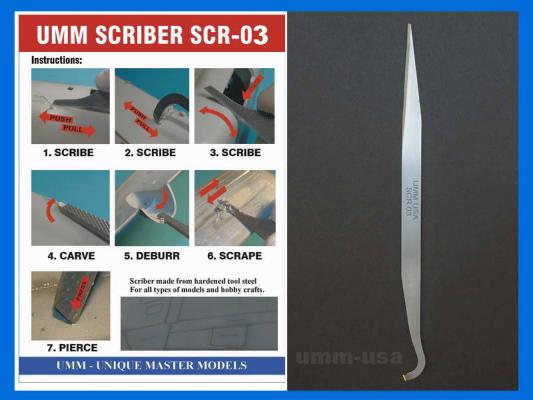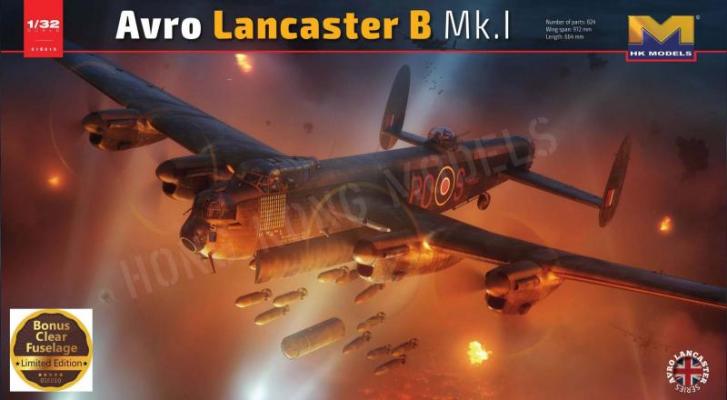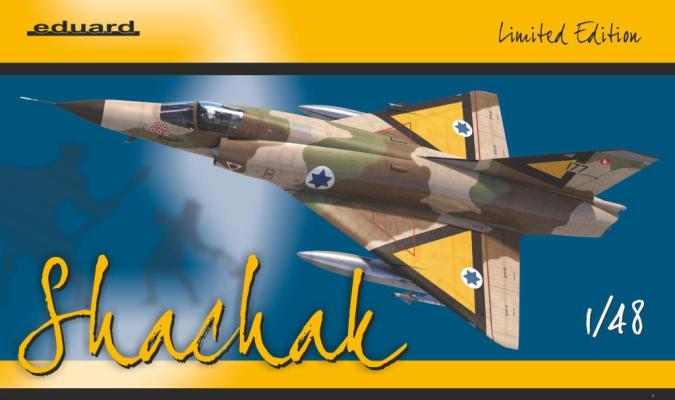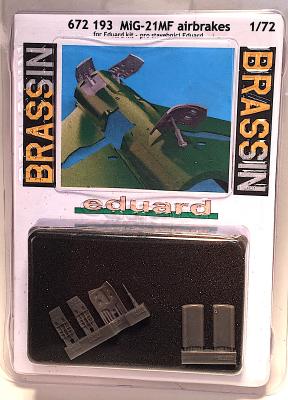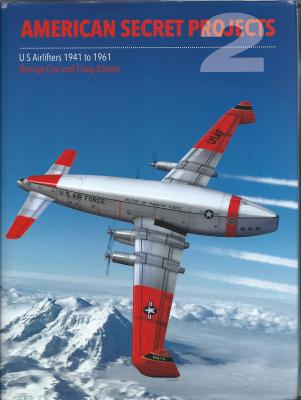I have been using UMM scribers for quite a while now. I use it for scraping seams and engraving panels lines eradicated by sanding and filling. Its design is multipurpose, and I love it. That was the SCR-01 original scriber. Since that came out, Jon has come out with an SCR-02 and now, an SCR-03 version. The newest version is longer and thinner than the originals providing even better access to tight corners.
The part itself is manufactured from hardened tool steel and has a matte finish. One end is a sharpened hook for scribing panel lines and the other end is a flat blade which also has an edge to it. Overall length is 5.5 inches which is comfortable to hold in your hands and makes it very maneuverable even with my small hands.
The UMM web site listed above lists its possible uses as scribing panel lines with push and pull techniques, removing pin marks, trimming flash, trimming stretched sprue, deburring, piercing, scrapping, carving etc.











